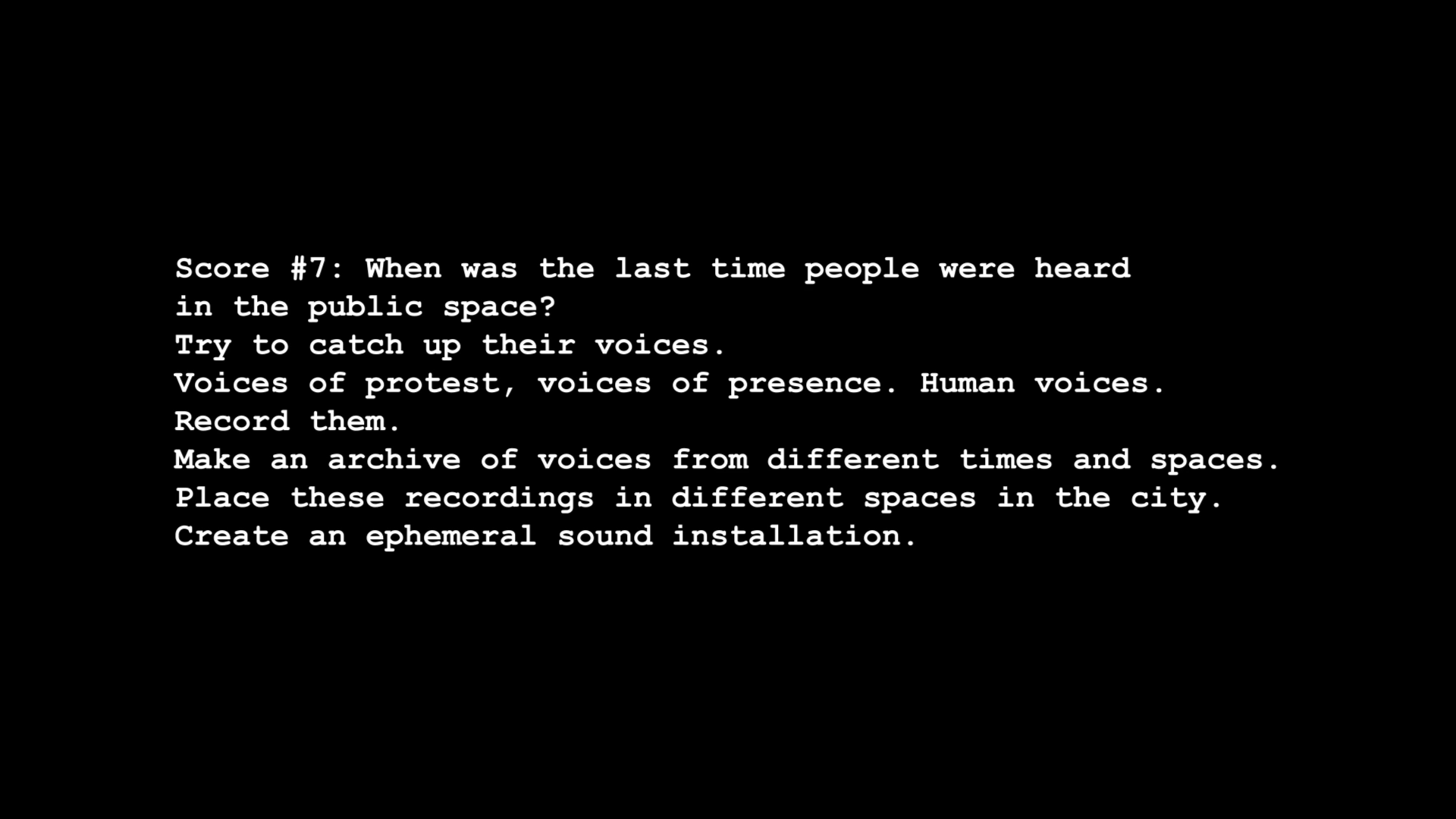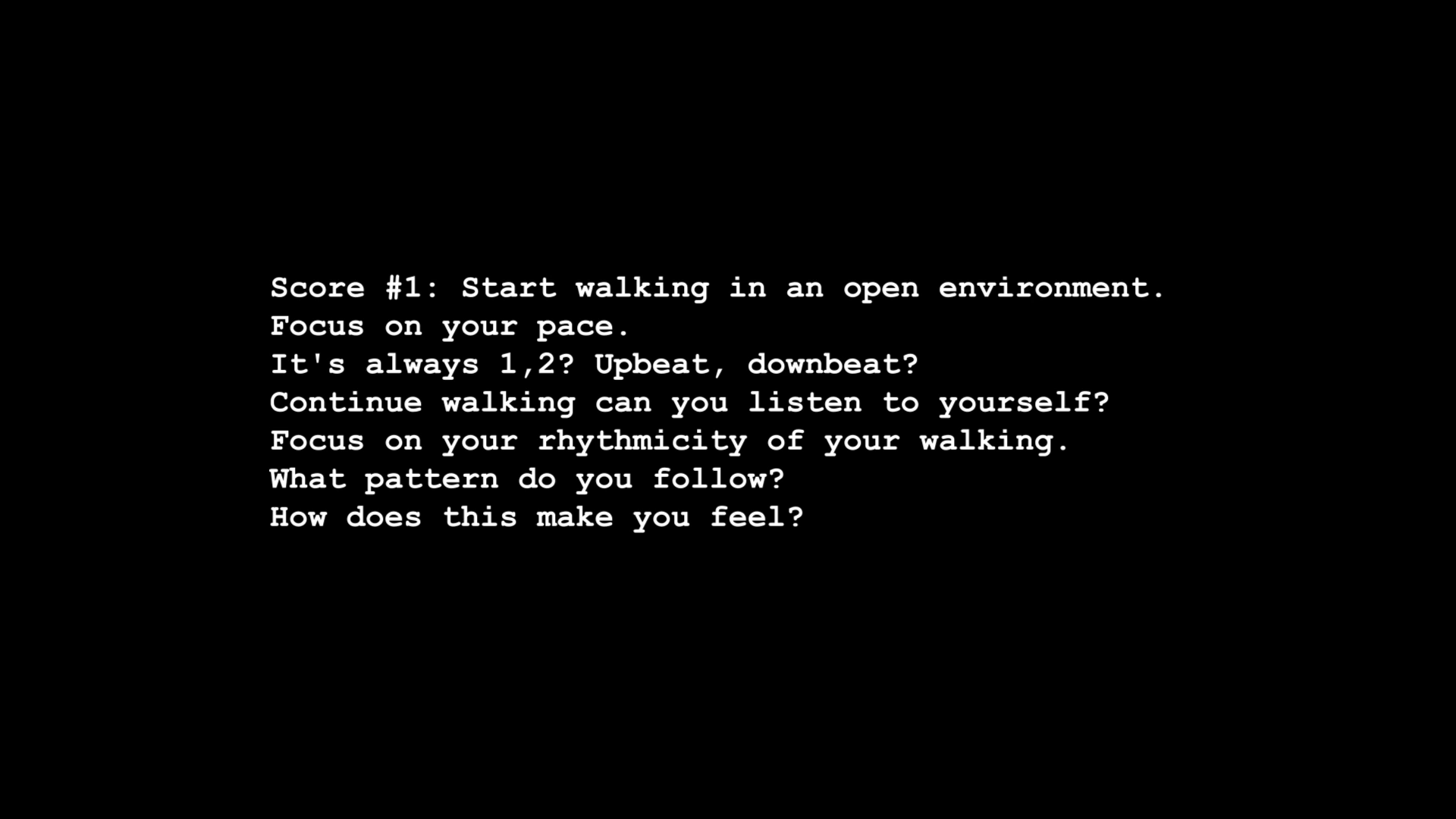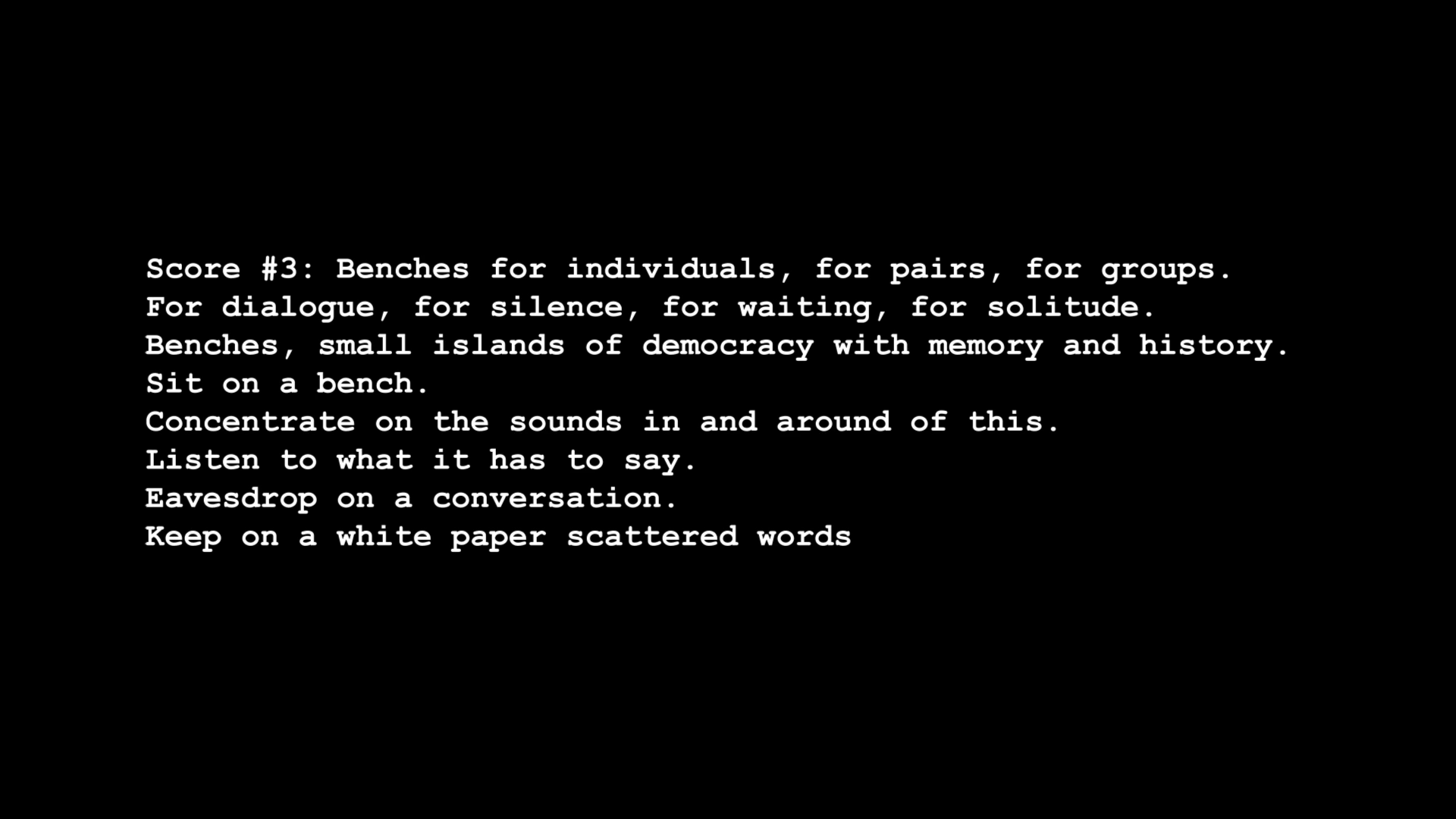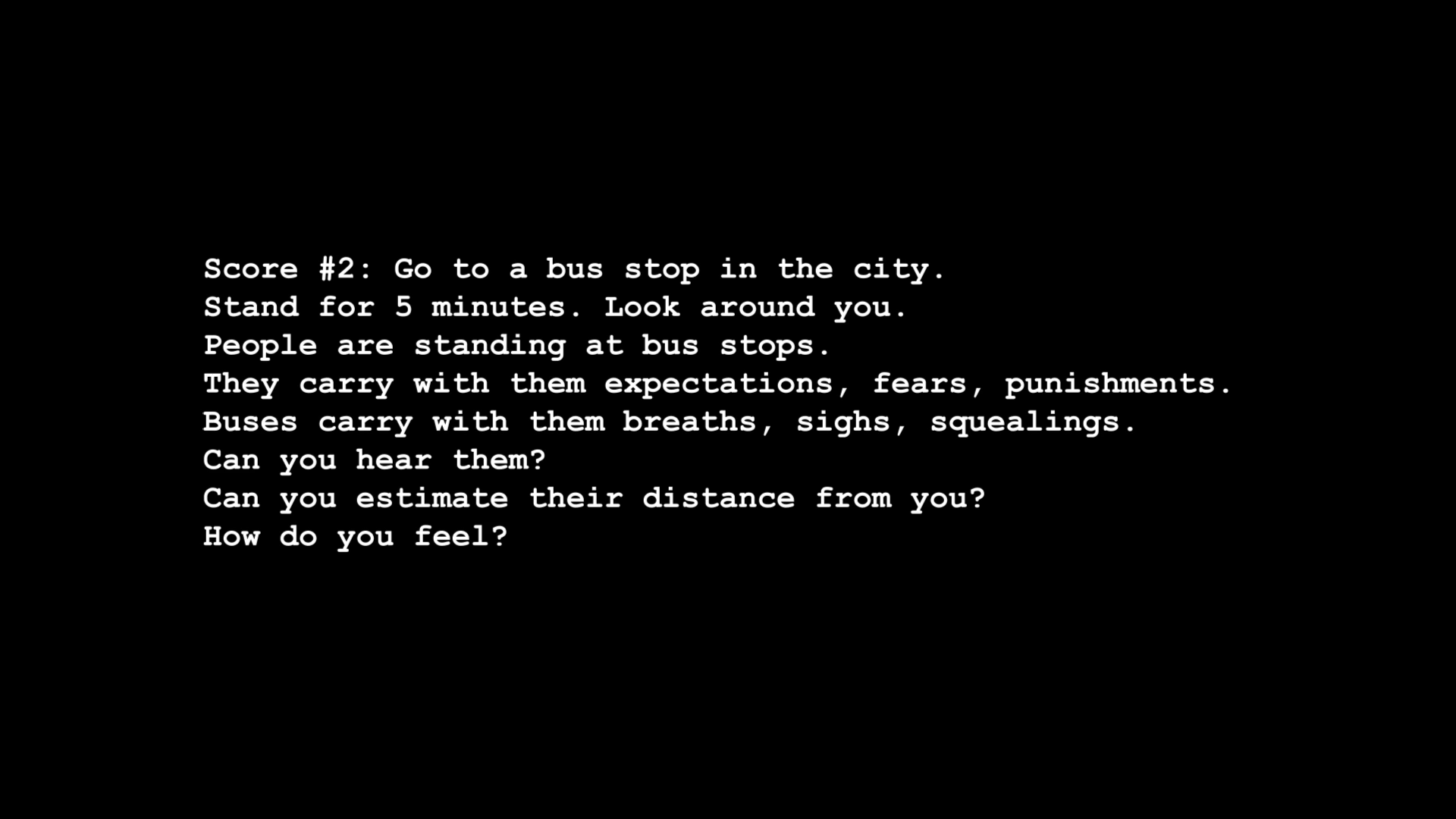“In one thing there is nothing more simple and more obvious than everyday life. […] In another sense nothing could be more superficial: It is banality, triviality, repetitiveness. And yet in another sense nothing could be more profound. It is existence and the “lived”, revealed as they are before speculative thought has transcribed them: what must be changed and what is hardest of all to change.” (Lefebvre, 2014)
In 1961, philosopher Henri Lefebvre defined everyday life, emphasizing its simplicity, obviousness, and profound nature. He viewed it not merely as a subject for sociological study but above all as a context for action with the aim of concrete transformation. The significance of the everyday has played a central role in walking sound practices since the 1960s.
John Cage's 4.33' brought live street sounds directly into the concert hall, highlighting that the aesthetic quality of what is heard and the introduction of music to the unpredictability of the situation are shaped by the deliberate act of listening. Later, Max Neuhaus among other artists (Phillip Corner etc.) questioned the effectiveness of Cage’s approach , where he invites people to experience urban sound in a concert hall, “like music”, though a work called LISTEN. They expanded this concert hall experience by taking the audience outside and offering them a demonstration in situ.
Taking this perspective into consideration, the Cityphonic Walks project aims to go one step further by investigating the sonic performativity of public space. It explores how space performs itself sonically and is performed through people's everyday actions in a transformative manner.
The research focuses on the affective capacities of sound and its ongoing role in shaping social spaces, aligning with the stages of performativity defined by Richard Schechner in relation to “being, doing, showing doing, and explaining showing doing” (Schechner, 2006). In The Presentation of Self in Everyday Life, Erving Goffman (1959) defines performance as “all the activity of an individual which occurs during a period marked by his continuous presence before a particular set of observers and which has some influence on the observers”. The two concepts of performance offer a framework to comprehend how individuals actively shape and contribute to the dynamic construction of social spaces through their intentional engagement with the sonic environment.
Figure 1: video screenshot: Cityphonic Walks 9 scores to unveil the sonic performativity of Athenian Streets
The term “Cityphonic” draws from the combination of “phonē” (voice) and the word “symphonic.” City & phone refers to the “phonē” (voice) of a city which is a set of sounds, a soundscape that can be understood as “an environment of sound (or sonic environment) with emphasis on the way it is perceived and understood by the individual, or by a society” (Schafer, 1969). City & symphonic: is about the orchestration of different spatiotemporal rhythms, sounds with political possibility (Lefebvre, 2004). The term Cityphonic is then combined with the idea of walks in public space. Questioning how a city would be shaped if audibility were the fundamental condition for participation in public, we lead audiences to explore the relational everyday activities and practices of walking and listening. Walking traverses and articulates all the discursive and physical spaces and is a complex multifaceted activity, intricately connected to particular geopolitical contexts, as well as the phenomenology and political dynamics of the body within a given space (Biserna, 2022). Listening, too, is not a mode of passive reception - it involves actively interpreting and reshaping the reality of both acting and being acted upon.
Figure 2: Video screenshot: Cityphonic Walks: 9 scores to unveil the sonic performativity of Athenian Streets
In the project was introduced a score-based method drawing from different modes of listening as formulated by Andra Mc Cartney (2010). They included historical, political, musical, evocative, and subjective listening. These methods and ideologies of listening operated as guidelines or scores, shedding light and nourishing reflections - actions on important issues taking place at that time in the public sphere. During an experiment - a soundwalk conducted in 2023 in central streets of Athens at night, a series of scores – verbal notation was created in order to investigate the “invisible, silent and unspoken aspects” (Drever,2009) of everyday life. It was a way of “being present in public space” and of “reclaiming the right to the city” in a time and space that appeared impassable.
Figure 3: Video screenshot: Cityphonic Walks: 9 scores to unveil the sonic performativity of Athenian Streets
These streets from Panepistimiou to Omonoia (known as the Grand Promenade) became for the soundwalkers, who were mostly women, platforms for exploring public life and verbal notation (of walking, listening, soundmaking) - a methodology to cultivate and reclaim them. However, navigating through areas perceived as "geographies of fear" prompted us to contemplate the complex rhythms that shape the night, raising questions about which bodies remain invisible and inaudible, and for which reasons. The participants were invited to act as rhythmanalysts “who are always listening out but they do not only hear words, discourses, noises and sounds they are capable of listening to a house, a street, a town as one listens to a symphony, an opera”. Of course, they seek to know how this music is composed, who plays it and for whom.” (Lefebvre, 2004). Through this lens, participants examined how time is socially structured in specific places and how the city is organized into "acoustic territories."(La Belle, 2010)
The scores sought to investigate the relationship between physical and discursive spaces, between the built environment and arenas of social interaction in order to develop words for what appears impossible (Voegelin, 2010). Beginning with listening to the rhythms of their body used as a metronome (rhythmicity of walking, breath, pulse) participants endeavored to capture the voices, rhythms, and sounds of their daily experiences through recording devices, reflecting upon them, and sometimes even performing them. It became evident that listening at night puts women in a vulnerable position, making them familiar with the unfamiliar—an inherent aspect of the soundwalking practice.
Figure 4: Video screenshot: Cityphonic Walks: 9 scores to unveil the sonic performativity of Athenian Streets
The participatory methodology of listening and recomposing sonic environments had two specific aims. Sometimes, it involved emphasizing the existing features of these environments, transforming them into "dwelling places—both places of exile and places to emigrate to" (Foreman, 2010). Other times, the goal was to interrupt or disturb the social production of spaces. The intention behind these actions was to generate alternative forms of understanding, engagement, recognition, existence, or agency.
This process involved learning to listen intimately, from small gestures to more significant sound events. Drawing from Erich Fromm "listening is an art like the understanding of poetry” the ongoing project Cityphonic Walks seeks to relearn everyday practices to envision the possibility of a shared acoustic cosmos.
Figure 5: Video screenshot: Cityphonic Walks: 9 scores to unveil the sonic performativiy of Athenian Streets
References
Biserna, E., (2022), Going Out – Walking, Listening, Soundmaking, Brussels: Q- O2.
Foreman, I. (2010). Vertiginous spaces, phantasmagorical geographies: Soundscape composition after Sebald. Soundscape: The Journal of Acoustic Ecology.
Goffman, E. (1959). The Presentation of Self in Everyday Life. New York: Doubleday & Company Irigaray L., (1996). I love to you: sketch for a felicity within history. New York: Routledge
LaBelle, B. (2010). Acoustic territories: Sound culture and everyday life. New York: Continuum. Levack Drever, J. (2009). Soundwalking: Aural excursions into the everyday. In J. Saunders (Ed.), USA: The Ashgate research companion to experimental music Ashgate.
Lefebvre, H. (2004) Rhythmanalysis: Space, Time and Everyday Life. Trans. Elden, S & Moore, G. London: Continuum.





